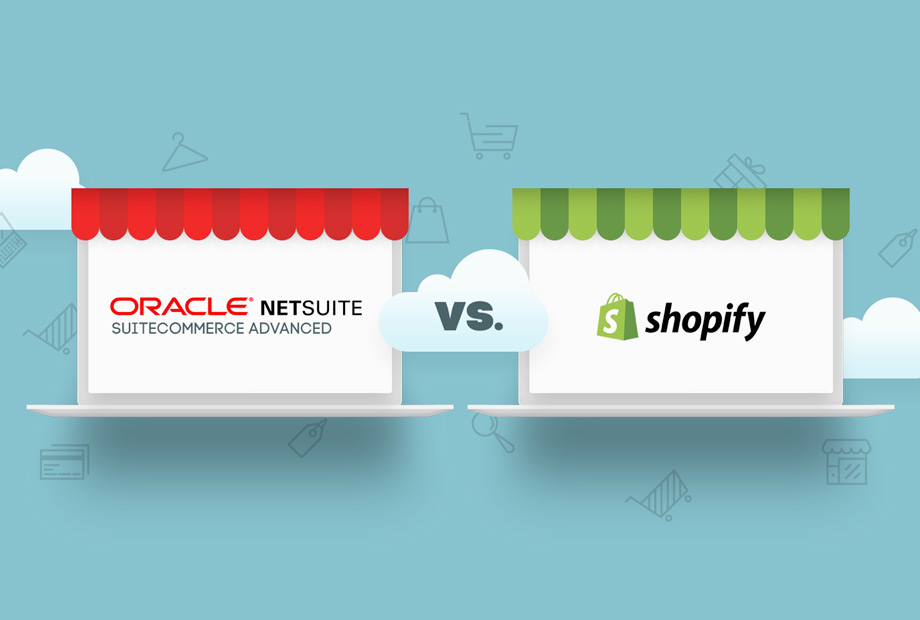Shopify is a widely used e-commerce platform and chances are that if you are doing research about which should be your next e-commerce platform Shopify is in the top 3 contenders of your list. Most likely, If you are currently using NetSuite for running your business then SuiteCommerce Advanced has also made to the top of your list.
Both NetSuite and Shopify have multiple editions (or products) ranging from basic to more sophisticated and complete. For this article, and to be able to compare apples to apples (if at all possible), we are comparing the most advanced and complete editions for both platforms – SuiteCommerce Advanced (SCA) vs. Shopify Plus.
As complete and full of rich features both products are they also have drawbacks (hey, nobody is perfect!) and you should know them and learn if their limitations can impact your business or not. So, with that said, we are going to focus on platforms’ limitations that the industry has identified for both products and we are analyzing them by different key categories.
Quick Launch Website Themes
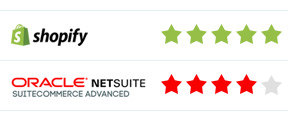
Let’s start with the obvious. An online store should look beautiful and professional to make a good impression on your customers. In this area both have killer examples demonstrating their design flexibility allowing merchants to deliver an engaging and pixel perfect experience for shoppers.
Great looking website themes and templates can be purchased for both platforms. Because of Shopify’s popularity, there are more pre-designed themes available on Shopify Themes. However, NetSuite recently announced that they are working in a soon to be released Theme Marketplace to stock hundreds of website themes and templates developed by NetSuite design agencies.
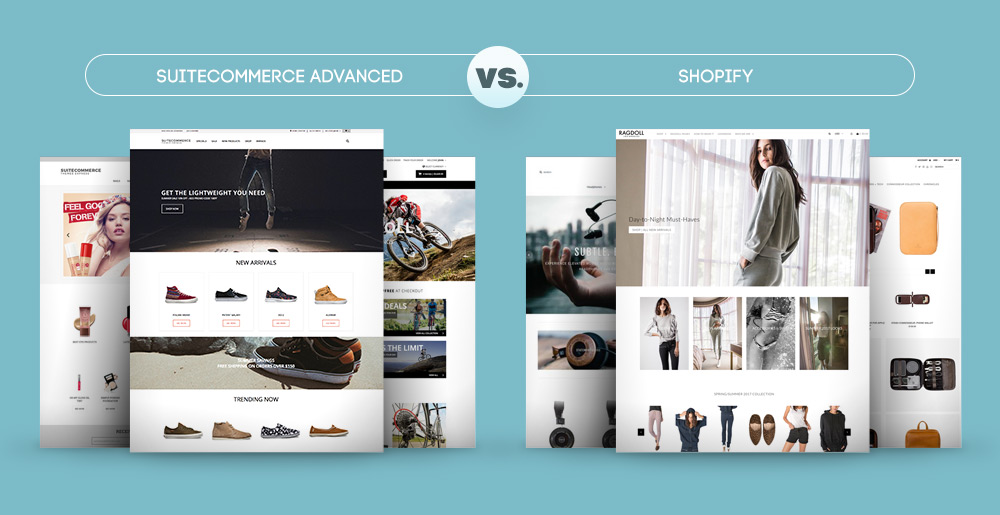
Website Customization (Design and Functionality)
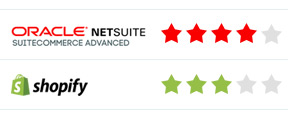
Customization capabilities is critical to every online merchant.
SuiteCommerce platform runs on common languages like HTML, CSS and JavaScript, making it easy to find developers that can help customize every single pixel of your online store and/or build custom website features and shopping flows to generate a better shopping experience. There’s a very complete educational portal, called Developers Portal, that includes, getting started guides, best practices, how-tos, and different articles to help developers customize their websites.
Unless you’re a pro at Liquid, Shopify’s custom templating language, your customization options are limited. Though it’s fairly well documented, learning and developing on Liquid can become quite challenging.
Merchandising Capabilities
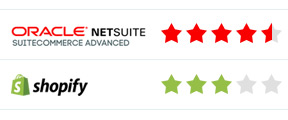
Powerful merchandising capabilities go a long way for helping display and promote products in the store but also on making it easier to handle and manage inventory.
SuiteCommerce Advanced comes with many built-in merchandising features. Faceted navigation is one of the most popular features allowing shoppers to narrow product listing using product filters (also available for search results pages). In the case of Shopify, these type of narrow filter navigation is not native to the platform and would require to install a 3rd party tool which comes at an extra cost.
One of SuiteCommerce Advanced merchandising highlights is Merchandising Zones. Merchandising zones are where online merchants can display products following any business logic (ie, best sellers, highest inventory count, most profitable items, most popular items, new arrivals) based on data coming directly from the NetSuite ERP (including all business areas and sales channels). This has proven to be a very powerful tool for merchants and can only be provided by a platform that apart from managing the online store, also manages the entire business suite including all incoming sales orders, inventory and even accounting.
In the case of Shopify Plus, displaying and promoting items based on a most profitable, or highest inventory count (as well as other business logics), is practically impossible as it is an e-commerce platform only, missing key ERP company-wide data.
Also related to merchandising, Shopify has been criticized for not helping merchants with large sku counts where products have different attributes per product category and, in some cases, unique attributes per product, basically saying it’s hard to setup the catalog, organize and maintain. If a merchant is selling products that come in different color, size and price then Shopify Plus is great, however when product attributes are more complex by product, then it’s not so good.
Website Performance
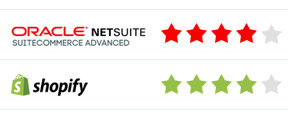
Shopify Plus and NetSuite SuiteCommerce Advanced sit on a cloud-based infrastructure, both offering a content delivery network (CDN) at no extra cost to ensure faster page loading time across the globe.
SuiteCommerce Advanced provides merchants with a world-class CDN powered by Cloudflare, while Shopify Plus provides a CDN powered by Fastly.
NetSuite SuiteCommerce Advanced 2018 performance standards are as follows:
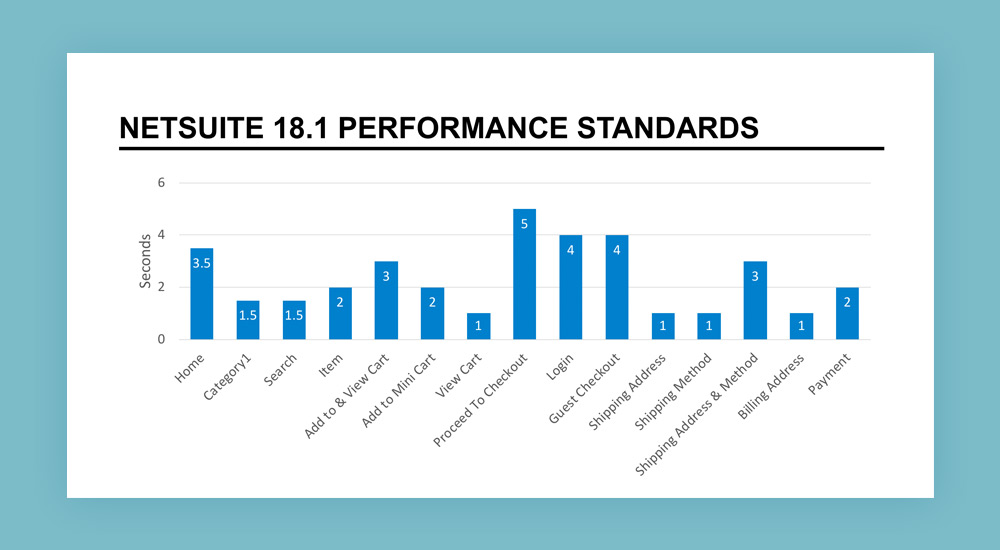
Source: NetSuite SuiteCommerce Advanced Performance
Unfortunately we couldn’t find any information from Shopify about Shopify Plus performance standards (or any other Shopify edition).
B2B Features
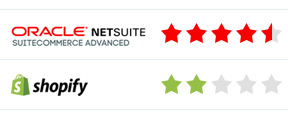
Customization capabilities is critical to every online merchant.
Based on the number and type of B2B features available in both products, you can see that while Shopify was originally built as a B2C ecommerce platform, SuiteCommerce Advanced was built with B2B in mind from the beginning (mainly since there’s a large share of B2B companies running on NetSuite).
There are a couple of alternatives to handle B2B model in a Shopify Plus website. First option would be to create a clone store, from your B2C website, to manage B2B customers. Second option is to use the password-protected invite only Wholesale Channel portal.
Shopify Plus supports :
- Customer based pricing
- Pricing breaks
- Ability to invite, edit and cancel wholesale accounts
- Set complex pricing discounts (both percentage and fixed) at a collection, store and product level
- Tiered pricing structures / discounts per customer
- Ability to set min. and max. order thresholds against customers
- Ability to provide different payment options for different customers (not hugely flexible)
- Ability to set product visibility for different customers
SuiteCommerce Advanced, on the other hand, is a richer solution for B2B since it can provide all the above Shopify’s features plus:
- Set Customers Credit Limits. Customers that reached their credit limit will not be able to submit new orders with terms (only paying with ACH or credit card).
- B2B Shipping Methods. Merchants can setup exclusive shipping methods for B2B website, not possible in Shopify Plus.
- B2B Payment Methods. Merchants can assign terms to individual B2B customers to allow them to pay with Invoice.
- Estimates/Quotes. Customers can submit Quotes and manage them from their My Account section.
- Pay Open invoices online. Customers can review their account open balance and submit full or partial payments to cancel open invoices.
- Print Statements. Customers can access to detailed account statement including all types of transactions such as orders, invoices and payments.
- Enter Quick Orders. B2B customers can easily create new orders by entering sku numbers and quantities to be purchased without needing to browse through the product catalog searching for products.
- Create Multiple Shopping Lists. Customers can create multiple shopping lists with the products they frequently purchase, making it easy to organize your product needs and quickly reorder items.
- Stock Visibility. Shoppers can see how much stock is available for each product. Merchants can even display the stock level in each warehouse.
- Design Flexibility. B2B storefront can be fully customized to meet the design needs of each brand. Shopify Warehouse Channel design can’t be modified.
In general, companies selling B2B typically sell through additional channels than online. Hence it’s key that customers portal not only displays sales, entered through the website, but include dashboard, reports, sales and transactions information sourced from all sales channels. This is why SuiteCommerce Advanced is better equipped to support B2B customers.
International Expansion
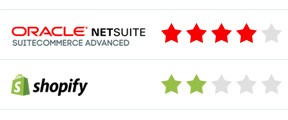
Both SuiteCommerce Advanced and Shopify Plus support multiple currency including checkout. This capability is brand new for Shopify who before only had multiple currency on product catalog only and once a customer reached the payment stage, though, they were only able to pay in the base currency of your site. One limitation though is that Shopify feature is subject to using their payment processor linked with Stripe. Also, currently supporting up to 9 currencies only.
As far as multiple language SuiteCommerce Advanced allows merchants to set up their store in as many languages as needed, however Shopify Plus requires merchants to clone the website every time a new language needs to be supported. This means that each Shopify instance and only support ONE language.
Platform Scalability
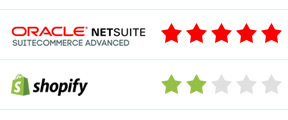
I personally don’t agree when people talk about platform scalability only referring to the capability of supporting growing traffic and sales.
Of course an e-commerce platform needs to be able to cope with a growing customer base, traffic peaks and as a result a larger volume of incoming orders. That seems obvious but only represents a tiny part of the pains that come with growing a business.
The real platform challenge when business is growing, that is often overlooked (and it ends up hurting merchants when it’s too late to change), lies on being able to manage larger volume of orders and how flexible the platform is to accommodate new business scenarios and pivot according to the new discovered market and business needs and trends.
Managing Growing Incoming Orders
A growing volume of orders will typically come with more fulfillment challenges and more advanced needs; and the same goes for payment processing needs, inventory adjustments, returns (RMAs) and more.
This is where Shopify Plus (or any other e-commerce-platform-only software) will succumb to SuiteCommerce Advanced.
When an online merchant selects Shopify Plus to run their e-commerce, the merchant will need to connect Shopify Plus to business critical 3rd party softwares such as CRM, ERP, Accounting and inventory management. To connect these systems, 3rd party connectors are required.
The problem with connectors is that they can support the most simple and most common business logics and integration points. However, and this is where “real fun” starts, as your e-commerce business is growing your business will require more advanced system communication to support the growing challenges that come with more incoming orders, fulfillment scenarios, payment processing needs, product returns, reporting, etc.
When you are using connectors to communicate between systems you will need to first pray that the connector will be able to support your growing needs and if at all possible, maintaining and keep developing advanced integration code. The risk for hurting the business is high, not to mention the time and money that needs to be allocated to make new scenarios work.
SuiteCommerce Advanced removes all these complications as no connectors are needed and e-commerce, CRM, ERP (including inventory management) and accounting live in NetSuite.
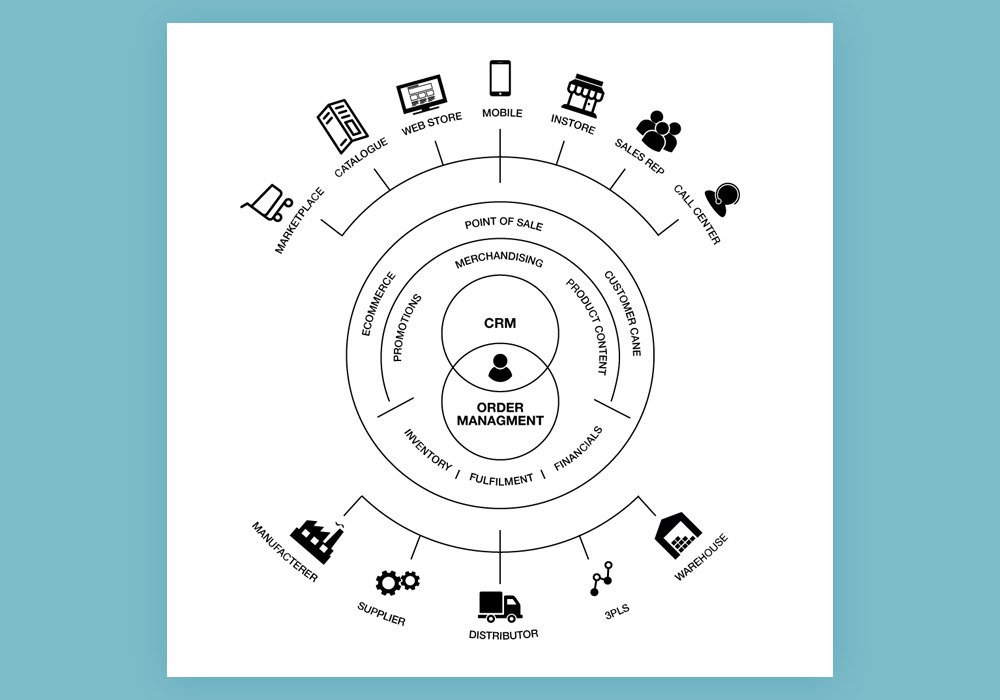
Platform Flexibility Is Key For Pivoting
Scalability needs to be also evaluated around the capability of a platform to be flexible enough to adjust and incorporate new business structures as the business grows.
Consumer needs change over time and new competitors arise challenging existing market players. As a result merchants need to adapt their businesses to support the new consumer demands and at the same time increase internal efficiencies.
That’s why the e-commerce platform needs to be ready to pivot and support future business requirements that merchants didn’t think they needed before, such as supporting multiple-languages, multiple-currencies, adding new departments, adding new accounting classes, better financials reporting, increased visibility on supply chain, forecasting demand, supporting multi-locations, etc.
Shopify Plus, only lets merchants change a few things in their Wholesale Channel and limited to strictly e-commerce features. SuiteCommerce Advanced, being part of NetSuite, can accommodate any new business need into the storefront, no matter if it’s related to an e-commerce feature or anything around CRM, ERP or even accounting.
Pricing
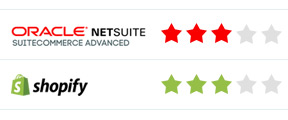
To evaluate pricing we built a comparison table where we add all expenses around building a typical e-commerce website using a pre-design theme, and customizing it to make sure that it doesn’t deliver a cookie cutter design, but a unique look and feel that matches customer brand.
| Shopify Plus | SuiteCommerce Advanced | Notes | |
| Website Development/ Integration | Range from $60,000 to $200,000 | Range from $40,000 to $80,000 | Considering a largely customized commercially available theme to deliver a unique look and feel that matches their branding, customer features, etc. |
| License | $24,000 per year (not negotiable) | $50,000 per year but usually negotiable. We assume aprox 30% discount totaling $35,000 to $40,000 | On Shopify Plus when reached $800,000 revenue per month it turns to a revenue-shared model paying 0.25% of monthly revenue. |
| Connectors to integrate with NetSuite | $5,000 per year | N/A | Connector supporting orders, customers, inventory, payments, refunds. |
| Total Cost First Year | Starts at $89,000 | Starts at $65,000 | |
| Total Cost For 3 Years | Starts at $147,000 | Start at $145,000 |
Conclusion
Before you choose an e-commerce platform for your site, make your homework and consider all relevant aspects of your business.
If you are selling B2C-only then both Shopify Plus and SuiteCommerce Advanced can be a great fit for you. However, if you are selling B2B (or B2C&B2B) then SuiteCommerce Advanced seems to be a more robust platform.
Both Shopify Plus and SuiteCommerce Advanced are amazing products and we hope that this article helps you better understand their differences, restrictions, and limitations.

